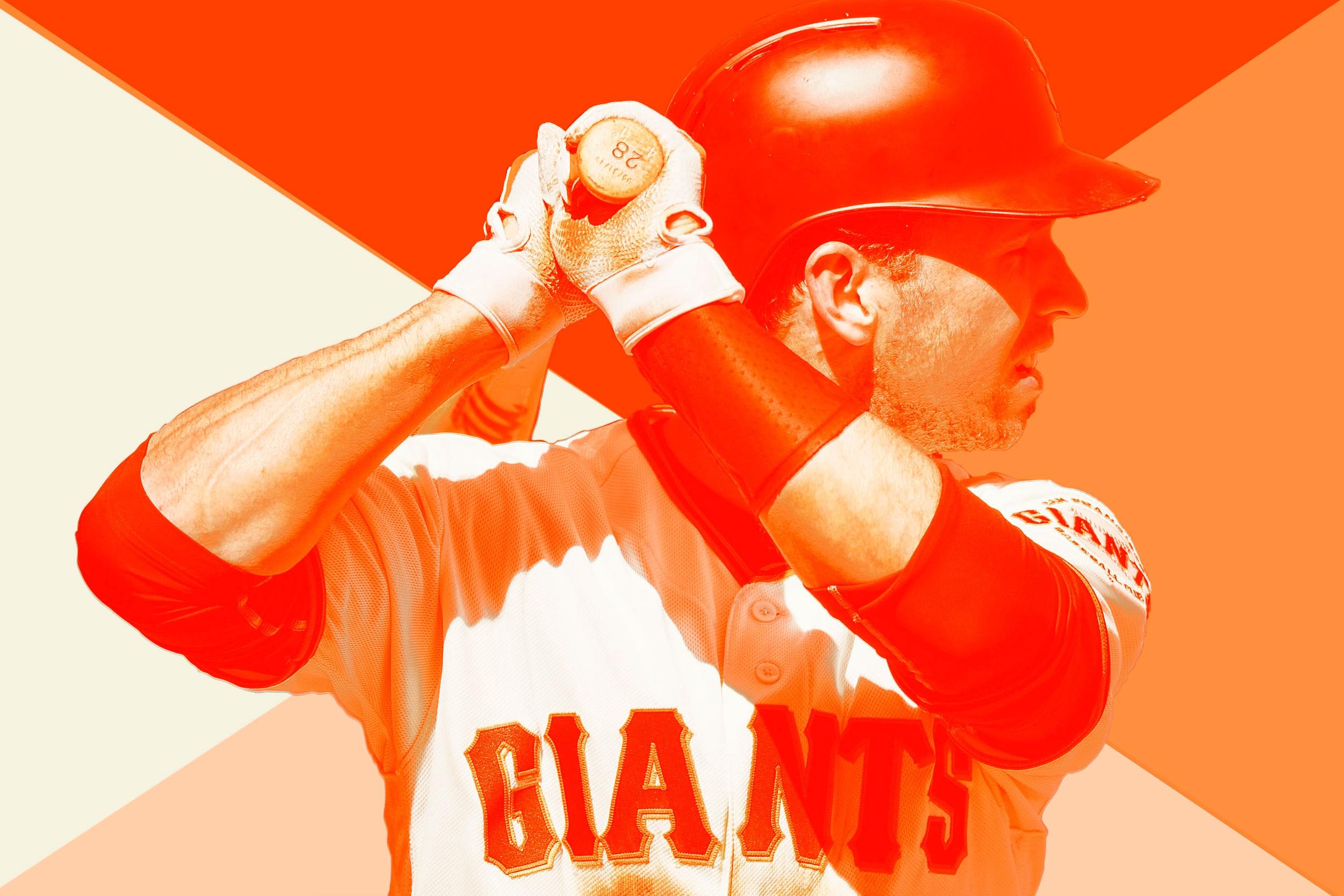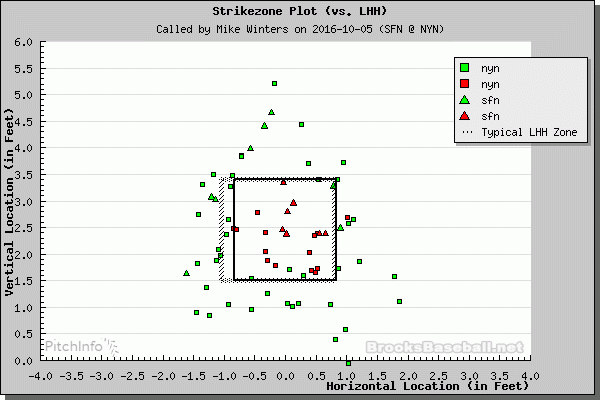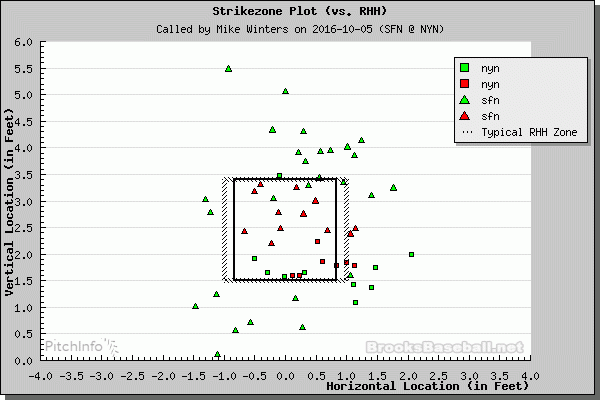
One of the best and most frustrating things about baseball is how egalitarian it is. Every hitter has to wait for his turn through the lineup; every pitcher has to sit for at least three days between starts. You can’t double-shift Clayton Kershaw, or give Mike Trout 41 carries, or run a clearout for Josh Donaldson with 10 seconds left on the clock.
This makes it difficult for one player to take over a playoff series. Difficult, but not impossible.
Giants catcher G.D. “Buster” Posey is one of very few players in baseball who can do it, and in order for San Francisco to beat a Cubs team that has the edge at almost every other position, he might, for the first time in his career, have to put the team on his back.
It’s hard to say this about a four-time All-Star who’s won three World Series, a Rookie of the Year award, an MVP award, and three Silver Slugger awards, but it’s possible that Posey is actually underrated. Of the 41 active position players with 30 or more career WAR, Posey is the third-youngest and has the third-fewest career plate appearances.
Posey’s numbers only get more impressive when you compare him to other catchers. Very few people have the skill and talent to be an impact hitter at the major league level and play passable defense behind the plate at the same time, and there hasn’t been the same kind of influx of young talent at catcher as there has been at shortstop to make that sort of double act look easier than it is. This season, only seven catchers put up a league-average OPS+ in even 300 plate appearances. Meanwhile, Posey, whose 112 OPS+ this year was the worst full-season mark of his career, was still the most valuable catcher in baseball according to Baseball-Reference and Baseball Prospectus.
It’s not just that Posey is a great player; it’s that by virtue of being a catcher he has a much greater impact on the game defensively than any other position player. Compare him to San Francisco’s other elite defensive player, Brandon Crawford. As a shortstop, Crawford makes four or five plays a game, on average; the rest of the time he’s either retrieving relay throws from the outfield or picking dandelions. Posey, however, is involved in every pitch. He has the chance to make conventional plays on bunts, pop-ups, or stolen base attempts, but he’s also charged with controlling the strike zone, which he does better than anyone else in baseball. Baseball Prospectus rates Posey’s framing alone as being worth 27.6 runs this year relative to league average; between his blocking and throwing, and his 98 innings at first base, Posey’s defense alone was 33.2 runs above average, tops in baseball at any position. Thanks to his defense, Posey was the fourth-best position player in baseball this year, according to BP’s WARP.
Framing is subtle, so you don’t see it in a highlight reel like a home run or a diving catch in the gap, but Posey has dozens of opportunities every game to steal a strike here and there, and it adds up, even in the span of one game.
Just look at the strike zone plots to left-handed and right-handed batters from Wednesday’s wild-card game.
Left-handed (from the umpire’s view):

Right-handed:

Mets catcher René Rivera, meanwhile, wasn’t Posey’s framing equal. Rivera couldn’t consistently get umpire Mike Winters to call the low strike against righties, or the outside strike slightly off the plate that usually gets called against lefties.
At the plate, Posey’s virtues are obvious; the Giants have a fairly deep lineup, but apart from Posey, Brandon Belt, and Hunter Pence, they don’t really have any particularly dangerous hitters, and even then, Pence and Belt aren’t going to keep opposing pitchers up nights the way Anthony Rizzo and Kris Bryant do. If you’re looking for a Giant to hit .450 with seven home runs over the next month, it’ll probably be, like, Jarrett Parker, because that’s just how they do business. But if you want a logical candidate to light up the scoreboard, Posey’s your man.
Yet, pivotal as Posey’s been in three different championship teams over the past decade, he’s not a very good playoff performer. As a rookie in 2010, Posey hit .288/.354/.390 in the playoffs, which is pretty good, if unspectacular. But in 2012, he hit .200/.294/.350, and in 2014, he hit only .246/.312/.246. In 2014, he played all but two of San Francisco’s postseason innings that year and didn’t manage an extra-base hit in 77 plate appearances.
Rather than attribute this drop-off to Posey being tragically unclutch, there’s an alternative explanation: fatigue. Catching in the big leagues is exhausting. You’ve got to squat, then stand up, a hundred-plus times a game, all while wearing a bunch of plastic and foam pads, in the sun, during the summer. That’s why most catchers take at least one day off every week; it’ll wear you down otherwise.
But Posey is nearly unique in that he’s such a good hitter, particularly relative to his teammates, that he can’t afford to rest like a normal catcher. Posey’s the only player in the National League to record 300 plate appearances, play half his games at catcher, and appear in at least 10 more games at another position. As a result, Posey is the only catcher in baseball to record 600 plate appearances this year. He was the only catcher to record 600 plate appearances last year. He’s recorded 595 plate appearances every year since 2012, and only four other catchers (Joe Mauer, Carlos Santana, Salvador Pérez, and Jonathan Lucroy) have hit that mark even once in the past five years.
That’s a lot of squatting with very little rest.
Consider what that kind of workload did to Pérez in 2014. He started 143 games at catcher that year, a preposterous workload, then caught every inning of the Royals’ 15 postseason games — four of which went to extra innings. Pérez hit .207/.233/.276 and, after a hit-by-pitch in Game 7 left him barely able to walk, made the last out of the season with the tying run on third.
Over his career, Posey’s been a pretty consistent hitter month-to-month, with his .830 career OPS in September and October regular-season games falling only slightly short of his career .848 mark. But his .680 September/October mark this year was his worst of any month in 2016, and his career playoff OPS is only .637.
The Giants’ postseason hopes could turn on whether Posey’s worn out, or whether he’s still got enough left in the tank to wear out opposing pitchers.